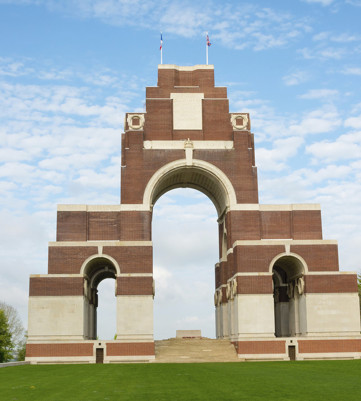
History trips to Somme
Enhance your students' understanding of the First World War by embarking on a historically rich school trip to France's Somme region. Vimy Ridge, a site that witnessed significant battles, starts your immersive journey, followed by The Somme 1916 Museum and Lochnager Crater, which offer a stark reminder of the war's devastation through artefacts and depictions. End your trip by paying your respects at Caterpillar Valley, Thiepval, and the Ulster Tower, where mass graves and memorials stand in solemn tribute to the brave soldiers who gave their all.





















SUGGESTED ITINERARIES
- Arrive in Somme
- Vimy Ridge
- Evening meal
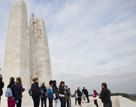
- Free time in Albert
- Somme 1916 Museum
- Lochnager Crater
- Caterpillar Valley
- Thiepval
- Ulster Tower
- Beaumont Hamel
- Return to UK
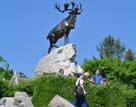
Features
ACCOMMODATION

Located in the historic centre of Albert, the Poppies Albert is an ideal choice for groups wishing to stay in the Somme as it's very close to the Somme battlefields.
- Free Wi-Fi
- Games room with pool table & table football
- Free access to football and basketball pitches



Located in the historic centre of Albert, the Poppies Albert is an ideal choice for groups wishing to stay in the Somme as it's very close to the Somme battlefields.
- Free Wi-Fi
- Games room with pool table & table football
- Free access to football and basketball pitches


Excursions
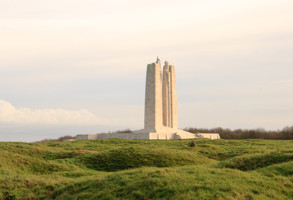
Vimy Ridge Memorial - Somme
A memorial site dedicated to the Canadian Expeditionary Force members killed or missing in the First World War, Vimy Ridge commemorates the first time all four divisions of the Force participated in a battle as a cohesive formation. Wartime tunnels, preserved trenches and unexploded munitions are still scattered throughout the nearby forest, making it inaccessible to visitors and this memorial best suited to older school groups.
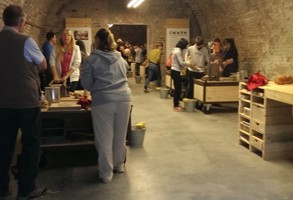
Musee Somme 1916 - Somme
Take your students underground for a unique perspective of the Battle of the Somme at this museum, where they’ll be able to imagine the daily lives of soldiers during the First World War. Alongside fighting, there were several different occupations and tasks allocated to the troops; here, students will also be able to view pastime games and trench crafts. Our recommendation? Visit after 3pm to allow your group the chance to see everything uninterrupted.
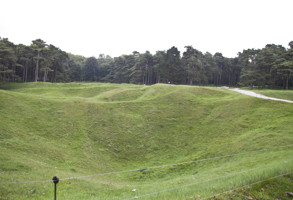
Lochnagar Crater - Somme
Get a sense of scale standing on the edge of this mine crater, which was sprung at 7:28am on 1st July 1916 by British troops. The charge was placed beneath the German lines on the British section of the frontline to assist the infantry advance at the start of the Battle of the Somme. It left a crater 30 metres deep and 100 metres wide that now serves as a symbolic place to remember and reflect by all nations.
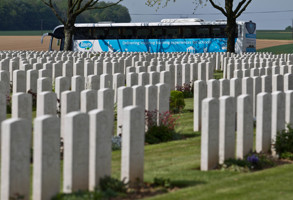
Caterpillar Valley Cemetery
Named after the long valley which rises east to the high ground at Guillemont, Caterpillar Valley is a First World War cemetery for soldiers of the Commonwealth. Initially containing 25 graves of men from the 38th (Welsh) Division, the cemetery was expanded after the war with more than 5,000 graves from autumn 1916 and 1918 – of which 3,800 remain unidentified.
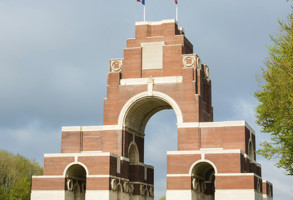
Thiepval Memorial - Somme
This Memorial to the Missing of the Somme bears the names of more than 72,000 officers and men of the United Kingdom and South Africa who fell in the Battle of the Somme in the First World War, with no known grave. A humbling experience for your students where they can contemplate and develop their understanding of this landmark battle.
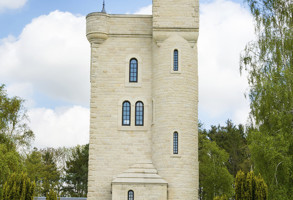
Ulster Tower Memorial - Somme
The Ulster Tower is a memorial to the men of the 36th (Ulster) Division. Upon attacking a German stronghold, known as Schwaben Redoubt, about 5,000 of the division were lost – half of their strength. The tower is a replica of Helen’s Tower in County Down, Northern Ireland, where the men of the 36th trained.
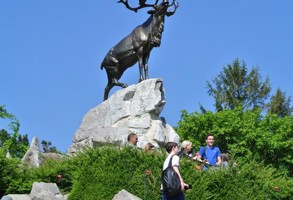
Beaumont-Hamel Newfoundland Memorial Park - Somme
Dedicated to the Dominion of Newfoundland forces members who were killed during the First World War, the Beaumont-Hamel Memorial encompasses the grounds over which the Canadian province’s Regiment made their unsuccessful attack in the Battle of the Somme. Here, students can learn about the regiment’s first major war engagement, while paying their respects to the fallen soldiers.

Arras
Built upon a huge chalk plateau, the city of Arras was a key location in the First World War, located on the Western Front just a few miles north of the Somme battlefields. The city features several excursions for your students to explore the history of the war, with the Carrière Wellington and the Canadian National Vimy Memorial both located nearby.
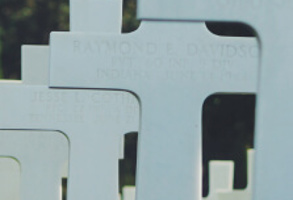
Louvencourt Military Cemetery - Somme
The resting place of nurse Vera Brittain’s fiancée, Lieutenant Roland Leighton, the British poet and soldier, made posthumously famous by her best-selling 1933 memoir, Testament of Youth.
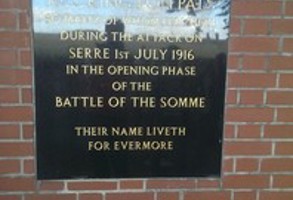
Sheffield Memorial Park & Accrington Pals Memorial
Students can learn about Lord Kitchener’s diversion from British military tradition in the First World War at this segment of Sheffield Memorial Park, which pays tribute to the men lost from the Accrington Pals battalion. We’ve seen school groups humbled as they hear about how neighbours, friends, and colleagues both enlisted and served together, with their fates intertwined.
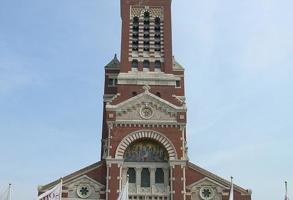
Albert Visit
The main town behind the lines of the Somme battlefields, Albert is an excellent location for your school group to expand their knowledge of the First World War. We recommend pointing out to your students the Golden Virgin on top of the Basilica of Our Lady of Brebières – one of the most famous icons for the British in the war, and a superstitious figure among soldiers who claimed the war would not be over until the statue fell or was destroyed.
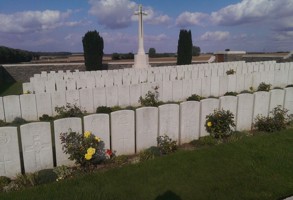
Devonshire Cemetery
A burial site for British Empire and Commonwealth troops killed in the Battle of the Somme, Devonshire Cemetery is located in a section of the old front line trench in Mansell Copse. Here, students can pay tribute to the men of the 8th and 9th Battalions of the Devonshire Regiment, including war poet Lt William Noel Hodgson, and look out for the inscription ‘The Devonshires held this trench, the Devonshires hold it still’, which appeared on the site’s original mass grave in 1916.
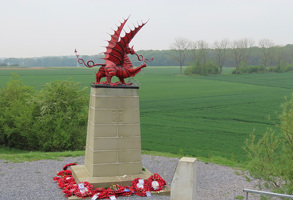
Mametz Wood Memorial
Students can learn all about the struggle of Mametz Wood at this memorial, which is dedicated to the Welsh soldiers who lost their lives clearing the German position in the wood in 1916. The operation took several waves and around 4,000 men sent across five days to be successful, after strong fortification and machine guns on the German side depleted the Welsh Divisions’ defences.
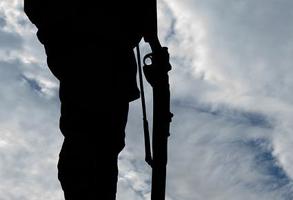
Memorial de l'Armistice
A rich and storied history marks this memorial, which has several tales to tell from both the First and Second World Wars. Built at the location where the Germans signed the Armistice of 11 November 1918, the original memorial was destroyed 22 years later under the order of Adolf Hitler, but was rebuilt after WWII ended.
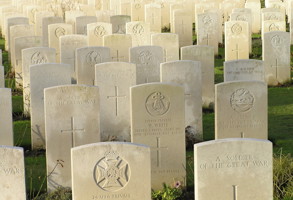
Ovillers La Boiselle - Somme
Come to Ovillers-la-Boiselle and you’ll find a settlement that dates back to pre-Roman times, yet which was completely rebuilt following its destruction during the First World War. The Western Front ran through the commune between 1914 and 1916, marking it as an apt location for your students to learn about the heavy fighting during the Battle of the Somme – standing upon the very soil on which it happened.
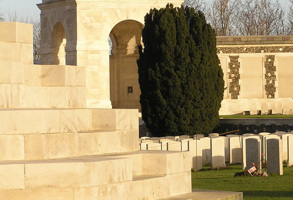
Indian Memorial at Neuve Chapelle
Give your school group a lesson on the efforts of British Empire soldiers at the Neuve-Chapelle Indian Memorial, which offers an excellent opportunity to discuss the significance of the British Raj during the First World War. Here, students can also pay their respects to the 4,750 Indian soldiers lost during the war with no known grave.
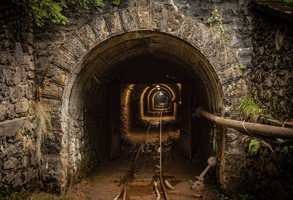
Wellington Quarry Museum
A fantastic excursion for helping your students connect with the British and Commonwealth forces in the First World War, the Wellington Quarry Museum – or Carrière Wellington – offers school groups the opportunity to wander a former underground quarry which was part of a network of tunnels used during the war. Wearing First World War helmets, your students will delve 22 metres underground into the tunnels, walking in the footsteps of soldiers as they prepared for the Battle of Arras in 1917.

Vimy Ridge Memorial - Somme
A memorial site dedicated to the Canadian Expeditionary Force members killed or missing in the First World War, Vimy Ridge commemorates the first time all four divisions of the Force participated in a battle as a cohesive formation. Wartime tunnels, preserved trenches and unexploded munitions are still scattered throughout the nearby forest, making it inaccessible to visitors and this memorial best suited to older school groups.

Musee Somme 1916 - Somme
Take your students underground for a unique perspective of the Battle of the Somme at this museum, where they’ll be able to imagine the daily lives of soldiers during the First World War. Alongside fighting, there were several different occupations and tasks allocated to the troops; here, students will also be able to view pastime games and trench crafts. Our recommendation? Visit after 3pm to allow your group the chance to see everything uninterrupted.

Lochnagar Crater - Somme
Get a sense of scale standing on the edge of this mine crater, which was sprung at 7:28am on 1st July 1916 by British troops. The charge was placed beneath the German lines on the British section of the frontline to assist the infantry advance at the start of the Battle of the Somme. It left a crater 30 metres deep and 100 metres wide that now serves as a symbolic place to remember and reflect by all nations.

Caterpillar Valley Cemetery
Named after the long valley which rises east to the high ground at Guillemont, Caterpillar Valley is a First World War cemetery for soldiers of the Commonwealth. Initially containing 25 graves of men from the 38th (Welsh) Division, the cemetery was expanded after the war with more than 5,000 graves from autumn 1916 and 1918 – of which 3,800 remain unidentified.

Thiepval Memorial - Somme
This Memorial to the Missing of the Somme bears the names of more than 72,000 officers and men of the United Kingdom and South Africa who fell in the Battle of the Somme in the First World War, with no known grave. A humbling experience for your students where they can contemplate and develop their understanding of this landmark battle.

Ulster Tower Memorial - Somme
The Ulster Tower is a memorial to the men of the 36th (Ulster) Division. Upon attacking a German stronghold, known as Schwaben Redoubt, about 5,000 of the division were lost – half of their strength. The tower is a replica of Helen’s Tower in County Down, Northern Ireland, where the men of the 36th trained.

Beaumont-Hamel Newfoundland Memorial Park - Somme
Dedicated to the Dominion of Newfoundland forces members who were killed during the First World War, the Beaumont-Hamel Memorial encompasses the grounds over which the Canadian province’s Regiment made their unsuccessful attack in the Battle of the Somme. Here, students can learn about the regiment’s first major war engagement, while paying their respects to the fallen soldiers.

Arras
Built upon a huge chalk plateau, the city of Arras was a key location in the First World War, located on the Western Front just a few miles north of the Somme battlefields. The city features several excursions for your students to explore the history of the war, with the Carrière Wellington and the Canadian National Vimy Memorial both located nearby.

Louvencourt Military Cemetery - Somme
The resting place of nurse Vera Brittain’s fiancée, Lieutenant Roland Leighton, the British poet and soldier, made posthumously famous by her best-selling 1933 memoir, Testament of Youth.

Sheffield Memorial Park & Accrington Pals Memorial
Students can learn about Lord Kitchener’s diversion from British military tradition in the First World War at this segment of Sheffield Memorial Park, which pays tribute to the men lost from the Accrington Pals battalion. We’ve seen school groups humbled as they hear about how neighbours, friends, and colleagues both enlisted and served together, with their fates intertwined.

Albert Visit
The main town behind the lines of the Somme battlefields, Albert is an excellent location for your school group to expand their knowledge of the First World War. We recommend pointing out to your students the Golden Virgin on top of the Basilica of Our Lady of Brebières – one of the most famous icons for the British in the war, and a superstitious figure among soldiers who claimed the war would not be over until the statue fell or was destroyed.

Devonshire Cemetery
A burial site for British Empire and Commonwealth troops killed in the Battle of the Somme, Devonshire Cemetery is located in a section of the old front line trench in Mansell Copse. Here, students can pay tribute to the men of the 8th and 9th Battalions of the Devonshire Regiment, including war poet Lt William Noel Hodgson, and look out for the inscription ‘The Devonshires held this trench, the Devonshires hold it still’, which appeared on the site’s original mass grave in 1916.

Mametz Wood Memorial
Students can learn all about the struggle of Mametz Wood at this memorial, which is dedicated to the Welsh soldiers who lost their lives clearing the German position in the wood in 1916. The operation took several waves and around 4,000 men sent across five days to be successful, after strong fortification and machine guns on the German side depleted the Welsh Divisions’ defences.

Memorial de l'Armistice
A rich and storied history marks this memorial, which has several tales to tell from both the First and Second World Wars. Built at the location where the Germans signed the Armistice of 11 November 1918, the original memorial was destroyed 22 years later under the order of Adolf Hitler, but was rebuilt after WWII ended.

Ovillers La Boiselle - Somme
Come to Ovillers-la-Boiselle and you’ll find a settlement that dates back to pre-Roman times, yet which was completely rebuilt following its destruction during the First World War. The Western Front ran through the commune between 1914 and 1916, marking it as an apt location for your students to learn about the heavy fighting during the Battle of the Somme – standing upon the very soil on which it happened.

Indian Memorial at Neuve Chapelle
Give your school group a lesson on the efforts of British Empire soldiers at the Neuve-Chapelle Indian Memorial, which offers an excellent opportunity to discuss the significance of the British Raj during the First World War. Here, students can also pay their respects to the 4,750 Indian soldiers lost during the war with no known grave.

Wellington Quarry Museum
A fantastic excursion for helping your students connect with the British and Commonwealth forces in the First World War, the Wellington Quarry Museum – or Carrière Wellington – offers school groups the opportunity to wander a former underground quarry which was part of a network of tunnels used during the war. Wearing First World War helmets, your students will delve 22 metres underground into the tunnels, walking in the footsteps of soldiers as they prepared for the Battle of Arras in 1917.
Trip details
All Equity packages are tailor-made to suit the needs of our groups. Here are our standard package inclusions:
- Return travel by coach
- All security charges, airport, and local taxes
- 1 free staff place for every 8 full paying passengers
- Half-board accommodation
- Excursions
- 24-hour emergency service support
- All travel documentation, luggage labels and resort information
- Lunches
- Meals en-route. While travelling to and from your destination you need to consider meals. These are not included in the package prices
- Air passenger duty. Any paying passengers over the age of 16 at time of travel will be charged a small tax fee
- Tourist tax
- Damage deposit
Prices are subject to change based on intended dates of travel and final numbers, the Equity team are here to offer you advice and guidance from start to finish, ensuring your school trip runs smoothly and is a great success.
Travel by: Coach
Coach transfer time from Calais: Around 2hrs
Best times to travel: All year round
Suggested tour length: 4 days, 3 nights





